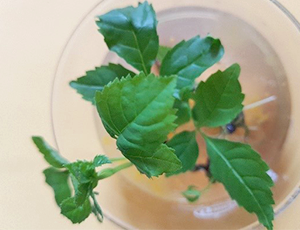search innovation
Hyperigmentation, also known as pigmentary lesions, occurs as a result of a disruption in the synthesis and/or deposition of pigment i.e. melanin in the skin. Melanin in the skin is synthesized in the so-called melanogenesis
process.
Hyperpigmentation is a special type of pigmentation resulting from excessive accumulation of melanin in specific areas of
the skin. These include chloasma, lentigines spots and post-inflammatory, hormonal and post-sun hyperpigmentation. The prevalence of pigmentary disorders can be as high as 80% in a given population, with those with darker complexions being a particularly high-risk group. The problem may still be underestimated, due to the variety of pigmentary changes, as well as the fact that people affected by these conditions do not always see a doctor or cosmetologist.
Currently available methods to support the treatment of hyperpigmenation include wavelength light and laser therapy, chemical
peels, as well as the external application of melanogenesis inhibitors known as bleaching substances.
Despite the solutions described above, there is still a need for melanogenesis inhibitors with high activity and, at the same time, a favorable safety profile and suitable for epidermal administration. The Jagiellonian University’s new invention, which is the present offering, is part of the trend in the search for new compounds to support the treatment of skin hyperpigmentation.
process.
Hyperpigmentation is a special type of pigmentation resulting from excessive accumulation of melanin in specific areas of
the skin. These include chloasma, lentigines spots and post-inflammatory, hormonal and post-sun hyperpigmentation. The prevalence of pigmentary disorders can be as high as 80% in a given population, with those with darker complexions being a particularly high-risk group. The problem may still be underestimated, due to the variety of pigmentary changes, as well as the fact that people affected by these conditions do not always see a doctor or cosmetologist.
Currently available methods to support the treatment of hyperpigmenation include wavelength light and laser therapy, chemical
peels, as well as the external application of melanogenesis inhibitors known as bleaching substances.
Despite the solutions described above, there is still a need for melanogenesis inhibitors with high activity and, at the same time, a favorable safety profile and suitable for epidermal administration. The Jagiellonian University’s new invention, which is the present offering, is part of the trend in the search for new compounds to support the treatment of skin hyperpigmentation.
commercial utility: Its subject is new active compounds and their application to the manufacture of cosmetic/therapeutic products to support
the treatment of hyperpigmentation, as well as to improve and unify skin tone.
The features of the invention:
• new compounds - (E)-N cinnamoylaminoalkanols (amide derivatives of cinnamic acid) with an established mechanism of action – due to the absence of phenolic groups in their structure, their mechanism of inhibition of melanin synthesis is not due to antioxidant activity,
• a very favorable package of in vitro test results: confirmed high melanogenesis inhibitory activity, favorable safety profile and optimal bioavailability after external application of the new compounds,
• for use in the manufacture of cosmetic and/or therapeutic products, especially used to support the treatment of hyperpigmentation, as well as to improve and unify skin tone (according to the nomenclature of cosmetic raw materials, the substances in question could be used especially in cosmetics as depigmenting” or bleaching raw materials).
The offered invention is subject of a patent application. Further research and development of the invention are continued
at the Faculty of Pharmacy of the Jagiellonian University Medical College. Currently, the Centre for Technology Transfer CITTRU is
looking for entities interested in commercial application of the invention.
the treatment of hyperpigmentation, as well as to improve and unify skin tone.
The features of the invention:
• new compounds - (E)-N cinnamoylaminoalkanols (amide derivatives of cinnamic acid) with an established mechanism of action – due to the absence of phenolic groups in their structure, their mechanism of inhibition of melanin synthesis is not due to antioxidant activity,
• a very favorable package of in vitro test results: confirmed high melanogenesis inhibitory activity, favorable safety profile and optimal bioavailability after external application of the new compounds,
• for use in the manufacture of cosmetic and/or therapeutic products, especially used to support the treatment of hyperpigmentation, as well as to improve and unify skin tone (according to the nomenclature of cosmetic raw materials, the substances in question could be used especially in cosmetics as depigmenting” or bleaching raw materials).
The offered invention is subject of a patent application. Further research and development of the invention are continued
at the Faculty of Pharmacy of the Jagiellonian University Medical College. Currently, the Centre for Technology Transfer CITTRU is
looking for entities interested in commercial application of the invention.
field of science:
forms of protection:
technological maturity:
property rights:
variants of cooperation:
information / broker of Jagiellonian University

name and surname: Klaudia Polakowska, PhD
phone number: +48 519 329 129
email: klaudia.polakowska@uj.edu.pl


























